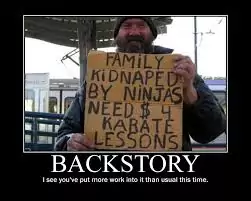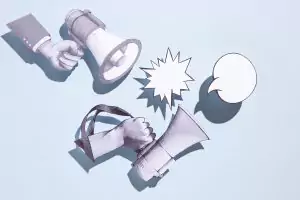
✅ AI Essay Writer ✅ AI Detector ✅ Plagchecker ✅ Paraphraser
✅ Summarizer ✅ Citation Generator
 One of the most interesting ways to improve your creative writing is adding something that does not quite contribute to the main storyline development, but brings in vividness, and makes the story more convex and credible. What I am talking about is a universal tool called “backstory.” With its help, you can make almost anything better in your writing.
One of the most interesting ways to improve your creative writing is adding something that does not quite contribute to the main storyline development, but brings in vividness, and makes the story more convex and credible. What I am talking about is a universal tool called “backstory.” With its help, you can make almost anything better in your writing.
Using backstory is a literary device that allows you to create premises for certain events or actions to take place. You can also use it to build your characters. A backstory serves well to create deviations from the plot, which help to explain certain aspects of the story immediately when it is needed, without having to write lengthy introductions, extra chapters, and so on.
Using backstory to build up a character is, to me, one of the most interesting ways of using this literary technique. Often, events that happen to a character tell more about him or her than author’s direct comments on this character’s personality traits. Usually, you insert a piece of such backstory occasionally, when it is needed, or when it is caused by the events from the main storyline—for example, when your character sees a person from the past and recalls events of the past, or when he or she experiences deja vu, and so on.
As for possible backstories that may help you develop your characters, you can refer to childhood traumas, memories of an accident, a dramatic love story, a story of a long journey, relationships with friends and parents, crime—anything that had a strong emotional impact on your character. You do not need to explain how your character changed after these events—a backstory only tells what happened, and leaves the rest to the readers’ imagination.
Another way to use a backstory is to give a reader an immediate clue of the premise of the events you describe. In the novel I am currently writing, I use this method often. One of my characters arrives to a ruined district of the city he lived in; in his childhood, it was a prosperous downtown quarter. For my story, this place is important, so I provide my possible audience with a brief historical reference on how this district decayed and what had happened to people who lived there. This backstory, masked as my character’s memories, takes about 250 words, but it discloses details necessary for understanding further events I am going to describe.
As for the length of a backstory, it depends on you. It can be one sentence, like: “John would rather be a thousand miles away from here, but a job was a job, so he walked into a bar—unwillingly, reminiscing on the day when some junkie stabbed his friend Jimmy for being black, here, in this very bar.” Or, it may be a page or two of plain text—it’s all up to you.
Backstory is a useful technique, but you should not overuse it. Now, go and practice.
Stay updated!
Follow us on Reddit for more insights and updates.




Comments (0)
Welcome to A*Help comments!
We’re all about debate and discussion at A*Help.
We value the diverse opinions of users, so you may find points of view that you don’t agree with. And that’s cool. However, there are certain things we’re not OK with: attempts to manipulate our data in any way, for example, or the posting of discriminative, offensive, hateful, or disparaging material.